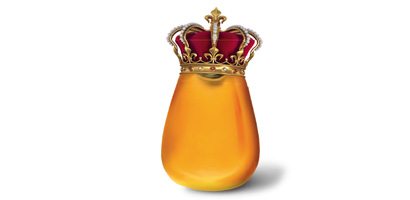The International Seed Federation is well on its way to determining the effectiveness of the global seed royalty process by country.
The International Seed Federation is currently looking at the various standard seed protection mechanisms used among agricultural producing nations around the world. The study is not expected to be released to the public until next year but is already providing some interesting insights.
According to Frank Curtis, chairman of the ISF Royalties Working Group and vice president of Limagrain Cereal Seeds, the purpose of the study is to provide not only helpful information to ISF member associations but to associations around the world. “Some countries are leading the way in providing royalties to plant breeders, such as Australia, the United Kingdom and some Northern European countries,” says Curtis. And there’s no better way to learn than by doing.
Curtis noted there are several different collection systems used around the globe including:
-
Patents that are widely used today on transgenics;
-
Plant Variety Protection to protect the use of the variety, however does not protect the genes of the variety;
-
Contract law is widely used around the world;
-
Biological properties—for example, in a hybrid—will only provide a collection benefit in the first generation of the hybrid; and,
-
Trade secrets—keeping it secret from everyone; if you apply for a patent you have to publish your research. The breeder can then license the technology to others with a contract to use the technology, but not tell.
According to the preliminary information that has been analyzed thus far, the ISF Royalty Working Group has organized each country in order of rank from best to worst. Curtis explains that in the top five countries’ royalty collection mechanisms, the 1991 UPOV (International Union for the Protection of New Varieties of Plants) and plant breeders’ rights are being adopted and these countries are now seeing the benefit. “Plant breeders’ rights effectively confer an exclusivity to market his/her variety, which is the usual way for many breeders to collect royalties,” explains Curtis.
However countries that still use UPOV 1978 and have not adopted the revised 1991 UPOV are falling behind and it shows—for example, Canada is almost at the bottom of the list just behind Poland.
Plant Variety Protection
Plant Variety Protection is currently being used in 70 countries around the world and the 1991 revision of UPOV further balances plant breeding rights versus farmers’ rights to retain seed for their own use. UPOV 1991 is becoming a global standard to follow in both developed and developing countries. It was adopted in the United States back in 1999.
“Some legislation in Europe allows the breeder to directly contact the farmer who is saving seed and those farmers are required to pay for doing that and it works in Europe,” says Curtis. However, that is not possible in countries such as Canada, where plant breeders’ rights are based on the old version of the UPOV 1978 convention.
The main difference between the 1978 and 1991 UPOV legislation is that the 1991 UPOV version allows breeders to extend their rights to the crop and not just the seed.
Various Royalty Mechanisms
There is a wide range of collection mechanisms taking place around the globe. For example, Australia uses end point royalties which place a type of levy on the total grain produced from the seed and replaces the seed royalty. With most royalty mechanisms, the collection on most crops are collected at the point of the seed sale, while the end point royalty is applied on the grain produced from the purchased seed. According to Curtis, the Australian system could easily be adopted in other countries.
“The end point royalty has revolutionized the Australian system,” says Curtis. “With the structure in Australia producers do not buy seed every year—they tend to buy new seed to change a variety, and there is also a strong control of marketing wheat and barley in both countries,” explains Curtis. “Australia, and some other countries around the world, works with bulk elevator systems which provide an ideal way to keep track and monitor what was bought and sold. It would be easy for other countries with a similar structure to adopt this system with the new UPOV legislation of 1991.”
Other regions leading the way include Northern Europe and in particular Sweden which has an extremely high percentage of certified seed purchases at a whopping 90 percent with only 10 percent retained by farmers year to year. “This is one of the best levels of intellectual property protection that we have analyzed so far with as much as 94 percent of the royalty actually going to the breeder,” says Curtis.
Finland is very different when compared to Sweden with only roughly 30 percent of seed being bought each year while 70 percent is saved on-farm. “The Finnish government took the view that it is in the best interest to have a record of all farmers and cropping patterns and collect on the farm-saved seed but at a reduced rate,” says Curtis.
Meanwhile, in France, only wheat and not barley comes under the guideline of its royalty collection system and not when the farmer purchases the seed, but only when the grain is being sold at the co-op. “A certain percentage is charged per tonne at the point of sale of the grain but if the producer has receipts for purchasing certified seed the producer can then reclaim a percentage of the royalty back,” explains Curtis.
Poland is least efficient in terms of royalty collections, despite the fact that the country has roughly 1.4 million farms. “In Poland if you farm less than a certain size, for example, 10 hectares, you are therefore exempt from paying royalties,” states Curtis. “The ISF Royalty Working Group’s analysis to date shows that only 18 percent of royalty income is collected in Poland.”
Why Adopt a Royalty Collection System?
According to Curtis there are numerous reasons for supporting plant breeding. “If governments are spending money on cultivar development, that’s a large investment that could be spent elsewhere. World food security is a big issue and will continue to be and the need for sustainable agricultural systems is vital such as the type of farming systems that reduce greenhouse gas emissions, increase soil fertility and slow erosion,” states Curtis. “Why not allow plant breeding to pay for itself through an effective royalty collection system?”
But the benefits don’t end with money. “The development of a self-sustaining cultivar business also provides other benefits, such as bringing other countries and companies together by providing collaboration and further investment in plant breeding,” adds Curtis.
The full detailed report on royalties will be given to ISF member associations at the end of 2010 and will be published
for the public the following year. Shannon Schindle
Top Five Countries that Provide Royalties
The ISF royalty Working Group has many more countries to assess in determining which is the most sustainable, but the top five countries to date include:
-
Sweden
-
Denmark
-
United Kingdom
-
Ireland
-
Finland
UPOV Background
A backbone for the protection of plant varieties is the International Union for the Protection of New Varieties of Plants (UPOV), which is an intergovernmental organization with headquarters in Geneva, Switzerland. The UPOV came into being with the adoption of the International convention for the Protection of New Varieties of Plants by a Diplomatic conference in Paris in 1
961 and was revised in 1972, 1978 and 1991. The objective of the Convention is the intellectual property rights of plant breeders in their varieties on an international basis. Membership in UPOV gives plant breeders the ability to protect their varieties in other member countries and gives producers improved access to protected foreign varieties. Shannon Schindle













